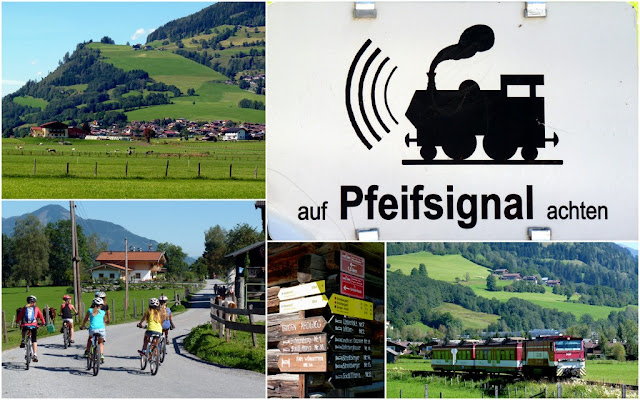Well, right away we missed a turn and got shot off into farm country. We zig-zagged around field after field, Don questioning me often about the turns we were making, and finally we got to territory Don recognized. We drove into the court, found a (rare) parking spot, and met up with Klaus and Evelyn Aker at their home.
It was so good to spend some time with them again and, as always, they were very fun and interesting to visit with. We enjoyed a delicious dinner, and talked and talked until it was bedtime.
The next morning we got up, had breakfast and talked some more. Evelyn wanted to entertain us by going somewhere, but we were just satisfied to hang out at their house and talk all day.
This was a terrific trip. Here are our recommendations:
1. GO TO THE AUSTRIAN ALPS. With all of the traveling we have done, I have never enjoyed the scenery as much. Austria is twice as beautiful and half the price of Switzerland.
2. Bike ride in Austria. This is the most bicycle-friendly country we have visited. Lots of nice bike paths and good bike lanes in major cities, too. The valleys at the foot of the Alps offer many excellent bike rides, with opportunities for interesting climbs and descents, if desired.
3. AirBnB worked out very well for us, so we can recommend their listings. We found the descriptions and ratings to be accurate.
4. If you are going to Venice, stay at the Hobo B&B for a very good value and a delightful hostess with lots of great advice. Spotless, spacious rooms, generous breakfast, nice garden for afternoon drinks, helpful and cooperative hostess, reasonable prices. Information and photos at www.bbhobo.itand contact at info@bbhobo.it. You can catch the boat into the city for a very reasonable price and it is an interesting and scenic way to enter Venice, from the sea.
5. If you are in the Burgundy region of France, visit the Chateau de Dree. This chateau is one of the nicer ones we have visited over our many years of touring in France, fully furnished with authentic period furniture right down to the silverware and crystal on the dining table, beautifully maintained grounds and a good guided tour in English.






















































